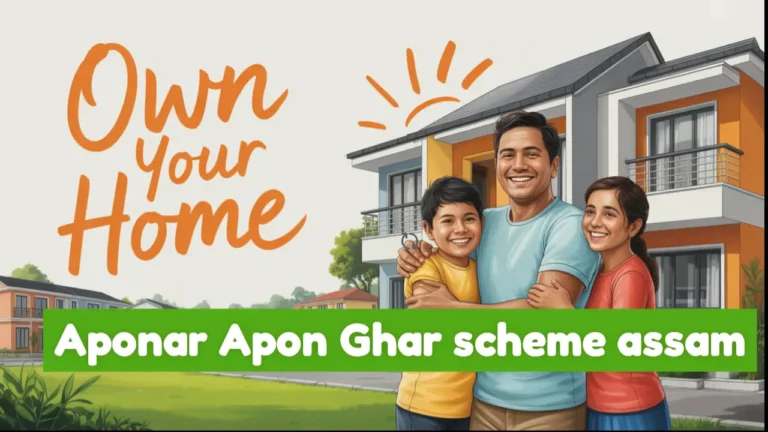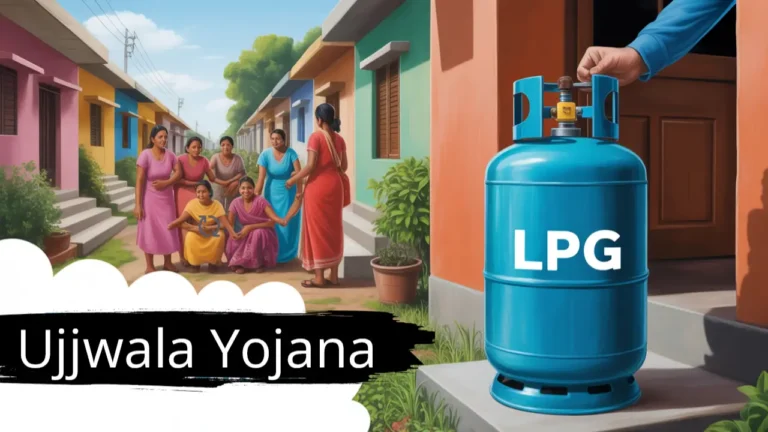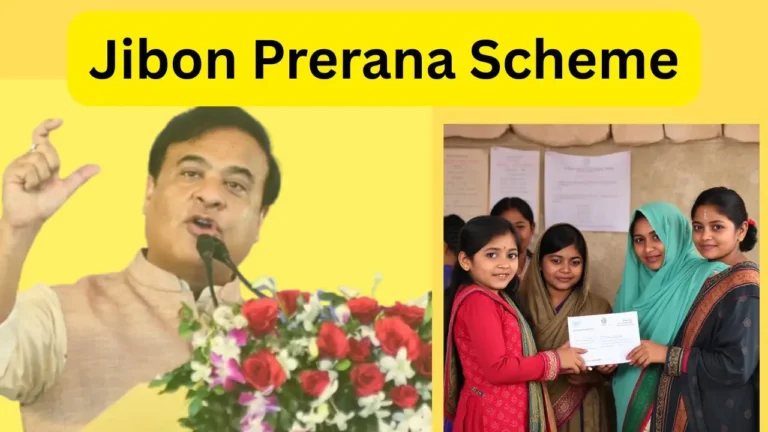Assam Tractor Subsidy Scheme 2025: How Farmers Can Get 70% Subsidy Under CMSGUY
Agriculture is the backbone of Assam’s rural economy. With more than 70% of its population dependent on farming, improving agricultural productivity is key to uplifting livelihoods in the state. Recognising this, the Assam government launched the Tractor Subsidy Scheme under the Chief Minister Samagra Gramya Unnayan Yojana (CMSGUY).
This ambitious programme aims to empower farmers by providing modern farming equipment, boosting mechanisation, and ultimately doubling farm incomes across Assam.
In this article, we explain everything you need to know about the scheme — what it is, why it matters, who can apply, how it works, and much more.

What is the Tractor Subsidy Scheme in Assam?
The Tractor Distribution Scheme is a flagship component of the Chief Minister Samagra Gramya Unnayan Yojana (CMSGUY), launched in December 2017. Its objective is simple yet powerful:
to revive agriculture by enabling farmers to use modern machinery and reduce dependence on manual labour.
- Each revenue village in Assam is eligible to receive one tractor unit, which includes a tractor + standard accessories + optional implements.
- The scheme plans to cover all 26,000 villages of the state in phases.
- In Phase 1, around 10,109 tractors were distributed.
- The Assam government allocated approximately ₹1,000 crore for the scheme.
By providing affordable access to tractors, the government wants to help farmers increase productivity and adopt double or even triple cropping patterns.
Details of Tractor Subsidy Scheme
| Particulars | Details |
|---|---|
| Scheme Name | Tractor Distribution Scheme |
| Under | Chief Minister Samagra Gramya Unnayan Yojana (CMSGUY) |
| Start Year | December 2017 |
| Goal | Mechanisation of agriculture & doubling farm incomes |
| Coverage Target | All 26,000 revenue villages in phases |
| Phase 1 Coverage | ~10,109 tractors distributed |
| Budget Allocated | Approx. ₹1,000 crore |
| Implementing Agency | Department of Agriculture, Assam |
Why the Scheme Matters
Why is this scheme so significant? Let’s understand the impact:
Boost in Farm Mechanisation
Traditional manual farming is labour-intensive and time-consuming. Tractors help farmers plough, sow, and harvest faster and more efficiently — particularly useful in areas practising double cropping.
Doubling Farmers’ Income
Mechanisation reduces labour costs and improves crop yields, directly contributing to higher farm incomes.
A Community Asset
Under the scheme, each tractor is owned by a group of farmers, making it a shared resource. This group model ensures that even small and marginal farmers can benefit.
Strengthening Rural Economy
Improved farming supports allied activities like irrigation, storage, logistics, and local markets, boosting the entire rural economy.
Who Can Apply Tractor Subsidy Scheme?
One key feature of this scheme is that it is designed for groups of farmers, not individuals.
Group Size & Composition:
- A group must consist of 8–10 adult farmers from the same revenue village.
- No more than one member per family is allowed in a group.
- All members should be genuine farmers with land records and crop details.
Common Bank Account:
The group must have a joint bank account to receive the subsidy and loan.
Eligibility:
- All members must be genuine farmers (verified by land and crop records).
- Government employees are not eligible.
- All members need to sign the application jointly.
This group model encourages community participation and ensures that the tractors are used for the benefit of many.
What the Subsidy Covers
Subsidy Structure:
Here’s how the financial assistance works:
- 70% subsidy on the tractor and accessories (maximum ₹5.5 lakh).
- Remaining 30%:
– 20% through bank loan,
– 10% to be paid by the farmer group.
What’s Included:
- Tractors in the 35–50 HP range.
- Standard accessories:
hood, toolkit, stabiliser, hitch, trailer hook. - Optional implements (as per need):
rotavator, disc harrow, cultivator, trailer, cage wheels.
Rental Usage:
The tractor is intended to serve the entire village.
The group must rent it out to other villagers for at least five years at rates fixed by the District-Level Committee (DLC).
How to Apply Tractor Subsidy Scheme?
Applying for the scheme is quite straightforward, provided you have all the documents and meet the eligibility criteria.
Documents Required:
- Aadhaar / valid ID of all members
- Address proof
- Joint bank account passbook
- Land records (Jamabandi, Khata, Khatauni)
- Kisan Credit Card (if available)
- Caste certificate or affidavit (for signatory)
Application Process:
Offline:
- Collect the application form from your District Agriculture Office (DAO).
- Fill out the group and farm details.
- Attach all required documents.
- Submit to the DAO, which forwards it to the DLC for approval.
Online:
- Some districts offer the option to download forms or apply online through the official CMSGUY portal.
- Always check the official website or DAO for the latest updates.
Keep Track:
- Follow up with your DAO or on the portal for application status.
- Watch for announcements about deadlines and extension dates.
Benefits & Real Impact Tractor Subsidy Scheme
Over the years, the scheme has demonstrated significant results for Assam’s farmers.
- Faster Land Preparation:
Farmers save days of work by using tractors for ploughing, allowing them to sow on time.
- Higher Yields:
Mechanised farming supports multi-cropping, increasing harvests and income.
- Shared Resource:
The group-based model ensures that even those who can’t afford machinery individually can access it.
- Rural Jobs:
Improved farming creates employment in areas like transport, repair, and equipment services.
- Financial Inclusion:
By involving banks, the scheme brings farmers into the formal financial system.
Future Outlook Tractor Subsidy Scheme
The Assam government is also promoting complementary schemes like:
- PM-KUSUM for solar pumps.
- MOVCD-NER for organic farming.
Together with the Tractor Subsidy Scheme, these initiatives aim to build a robust rural infrastructure and make Assam a leader in modern, sustainable agriculture.
Once the scheme fully covers all 26,000 villages, it will bring mechanical support, better incomes, and stronger community ties to farmers statewide.
Conclusion
The Tractor Subsidy Scheme under CMSGUY is a bold, farmer-centric initiative by the Assam government to transform rural agriculture.
By offering:
- up to 70% subsidy,
- easy financing options,
- and a community-driven model,
it helps modernise farming, reduce costs, and enhance productivity.
If you are a group of farmers in Assam, this is a golden opportunity to access affordable, mechanised farming tools — a big step towards doubling your income and improving your livelihood.
F.A.Q.
– Who can apply for the tractor subsidy scheme?
Only a group of 8–10 adult farmers from the same revenue village can apply. No more than one member per family is allowed in a group. Government employees are not eligible.
– How much subsidy is provided under the scheme?
The government provides a 70% subsidy on the cost of the tractor and accessories, up to a maximum of ₹5.5 lakh per unit.
– What is the farmers’ contribution and loan structure?
The farmer group contributes 10% of the total cost, and a bank loan covers 20%. The remaining 70% is paid by the government as a subsidy.
– What equipment is included in the scheme?
The scheme provides a 35–50 HP tractor along with standard accessories (hood, tool kit, stabiliser, trailer hook) and optional implements like rotavator, disc harrow, cultivator, trailer, cage wheels.
– How can farmers apply for the scheme?
Farmers can collect the application form from the District Agriculture Office (DAO), fill it with group & land details, attach the required documents, and submit it. In some districts, online forms may also be available on the official CMSGUY portal.
Also read:-






